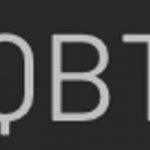SUNY research team uses open-source software to simulate a functioning quantum computing network

(Buffalo.edu) A State University of New York (SUNY) research team has used open-source software to simulate a functioning quantum computing network. IQT-News shares SUNY’s announcement about the study entitled “Entanglement generation in a quantum network with finite quantum memory lifetime,” which was published online March 8 in AVS Quantum Science.
Scientists are already studying what components — such as light sources, detectors and beam splitters — are needed to create efficient quantum computing networks.Unlike today’s computers, which code information in bits that take the value of “1” or “0,” quantum computers use quantum bits (also called qubits) that harness the ability of subatomic particles to exist in both the “1” and “0” state simultaneously. This code shift dramatically increases a computer’s power to analyze information.
However, most qubits are very fragile. Some require temperatures as low as -273 degrees Celsius to exhibit “long-lifetime coherence,” which is another way of saying the qubits continue to properly function, allowing the computers to perform their work.
The new study aims to explore these limitations by simulating a quantum computing network where two parties share information securely.
This includes numerous aspects of quantum science, including quantum entanglement, which, according to Merriam-Webster, is “a property of a set of subatomic particles whereby a quantum characteristic (such as spin or momentum) of one particle is directly and immediately correlated with the equivalent characteristic of the others regardless of separation in space.”
The goal, researchers say, is to improve the scientific community’s knowledge on the types of physical systems needed to make quantum computing networks reliable and practical.
“We want to explore how efficiently we can share quantum entanglement between distant nodes,” says co-author Xuedong Hu, PhD, professor of physics in the UB College of Arts and Sciences. “The essential criterion for effective quantum internet is generating entanglement robustly among distant nodes with a high repetition rate.”
For the simulations, the researchers used technology developed by Argonne National Laboratory.
Sandra K. Helsel, Ph.D. has been researching and reporting on frontier technologies since 1990. She has her Ph.D. from the University of Arizona.





















